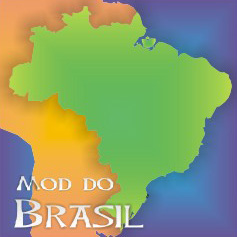CivArmy s. 1994
Deity

Im doing the Mod do Brasil (Mod of Brazil), just using leaderheads, units and wonders from Brazil. Here come some of these wonders! I did all these creations and it is just the beginning, I have to post new ones soon.

Carnaval: The Brazilians believe them Carnival is the biggest party of all World: for one week the country stops to dance the rhythmic of Samba in every city of the entire nation. Rio de Janeiro, São Paulo, Salvador and Recife are the main centers of this huge (and sometimes unbelievable to foreign visitants) party. The Carnival beginning in Europe and when it has been brought to Brazil it incorporated elements of the African and Native American cultures, resulting in this big party that Brazil has today, every year next of Western Holyday.
Download: http://www.civfanatics.net/uploads9/Carvanal.zip
Maracanã: Maracanã is the biggest soccer stadium ever built in the World. This sport is the most popular in the planet and the biggest passion of Brazilian people. This love is so intense that, when the Main Team of this country plays a match in the World Cup, Brazil stops to watch the game. I'm Brazilian, and I can truely say that there are no symbols here that stimulate our nationalism. But when our team (also called Seleção Brasileira or Seleção Canarinho) plays, there's no people more nationalist than the Brazilian people. This stadium lies in Rio de Janeiro, its capacity is up to 200.000 supporters and it was built in 1950 World Cup, which was played in Brazil. In this Cup happened the biggest disaster in the history of Brazilian Soccer Team: we were defeated by Uruguay in the final match game, in Maracanã. Yes, Brazil lost the final game of the World Cup played at home. That happening was so appalling to the country that industrial activity decreased for weeks because the people were very depressed.
Download: http://www.civfanatics.net/uploads8/Maracana.zip
Matriz de Congonhas Aleijadinho is the sculptor of the statues around the Matrix Church of Congonhas do Campo, in Minas Gerais State, Brazil. They were sculpted in soap stone in the XVIII century, when this area had turned into the centre of the colony (due to the Gold Rush). The statues in real size were made in Barroco style and represented the 12 prophets and a passage of the Christian Bible: it's an amazing view to tourists. One fact that makes this sculpture one of the most important of the entire world: this dozen of real size statues were sculpted by a man that DID NOT have hands. Yes, it's really astonishing
Download: http://www.civfanatics.net/uploads7/congonhas.zip
Primeira Missa Primeira Missa means "First Cult" in Portuguese and shows the first Christian cult that happened in Brazil. Today, the country is the larger country in number of Catholics in the World. This cult was the first act that has tried to convert Native Americans in Christians. And this convertation process was part of process that has decimated almost all the Native population in Brazilian lands. The first Christian cult in Brazil was celebrated by Frei Henrique de Coimbra in the same week that Pedro Álvares Cabral has arrived in the New World. In the next years the process of conversation had grew up and killed that ones that has denied to join in the religion of them new masters.
Download: http://www.civfanatics.net/uploads8/PrimeiraMissa.zip
Viajem de Cabral: Viajem de Cabral means Pedro Álvares Cabral Voyage, the command of the first Europeans that have been in Brazil.
Download: http://www.civfanatics.net/uploads9/ViajemCabral.zip





